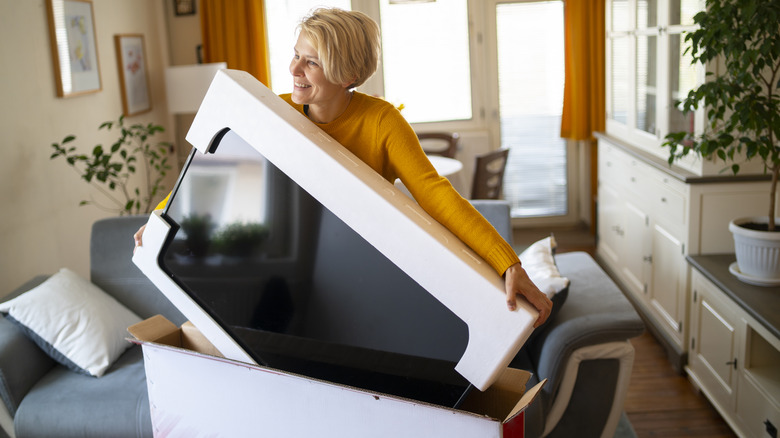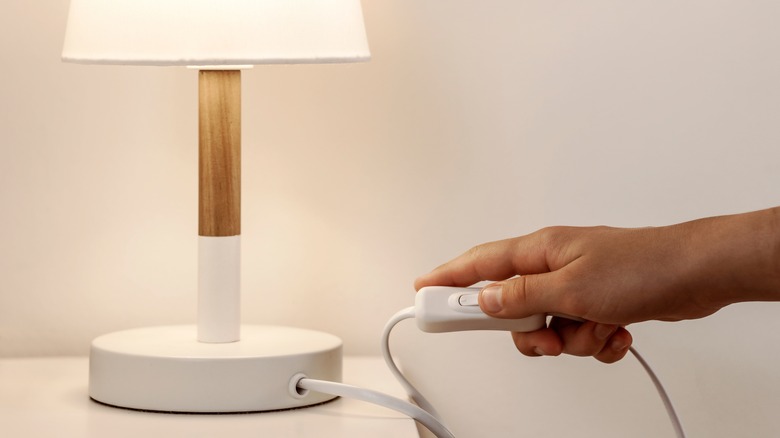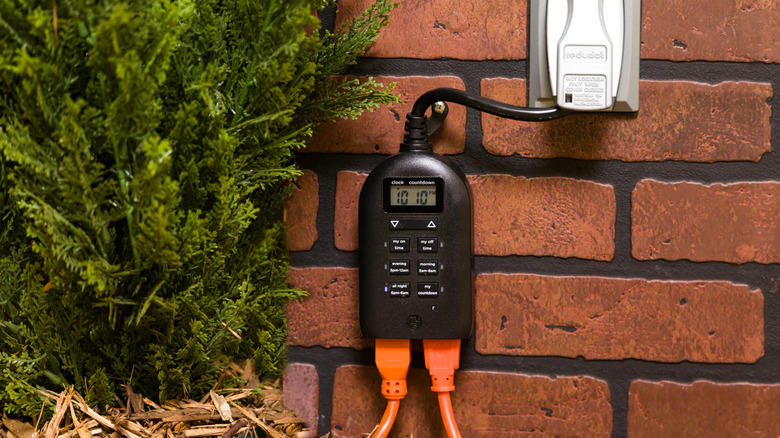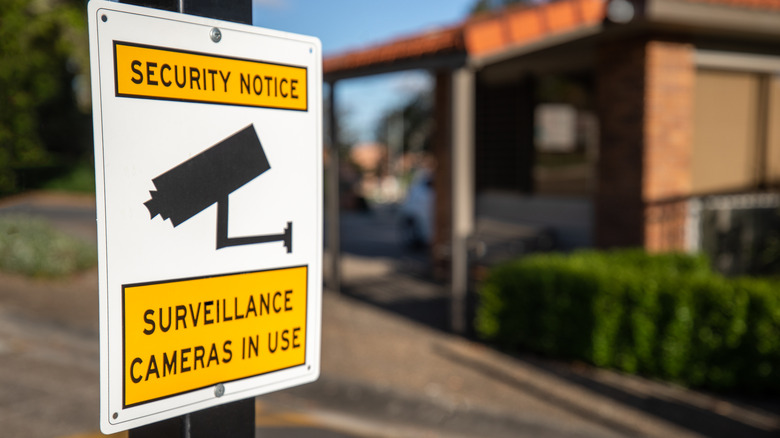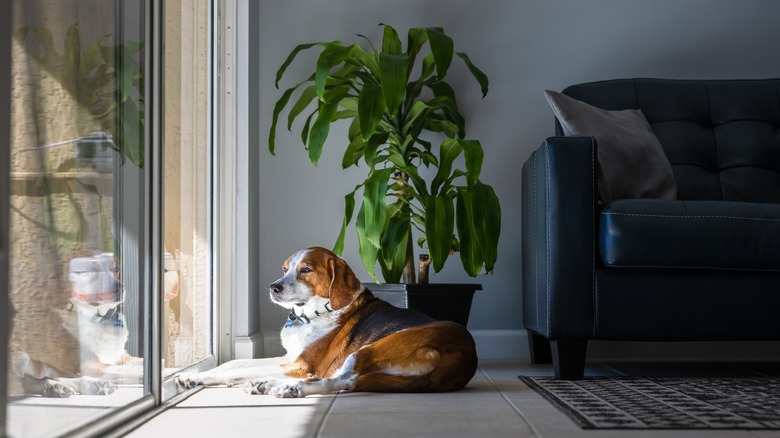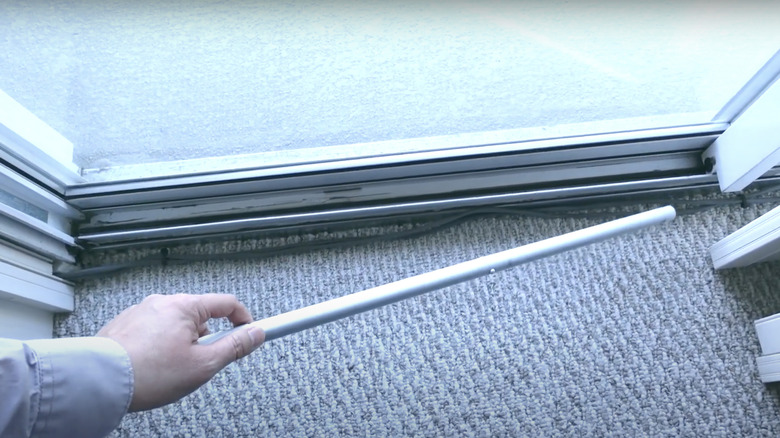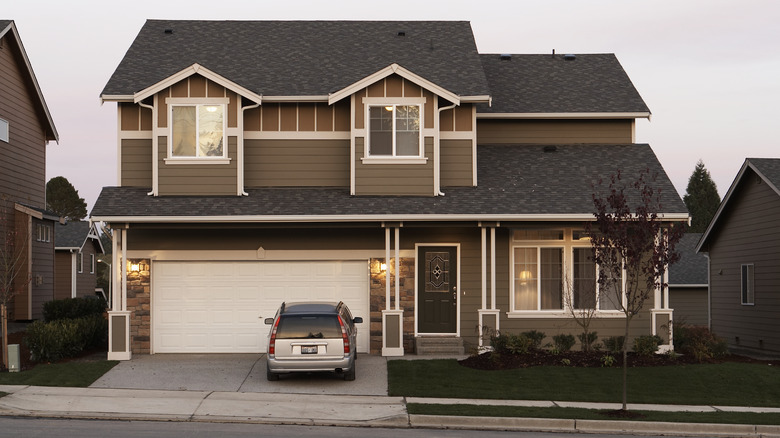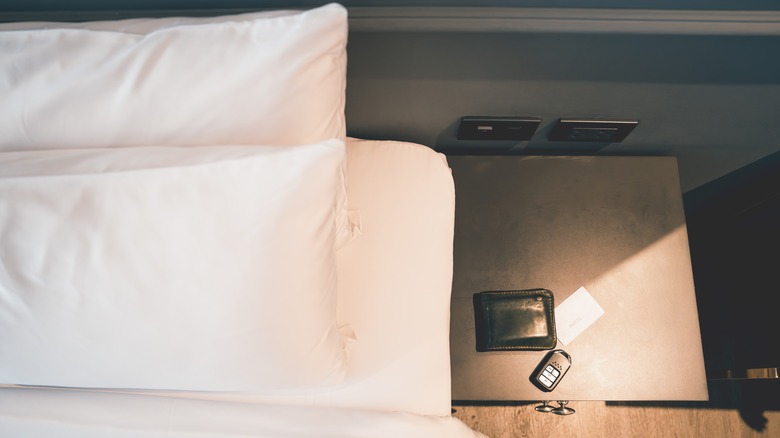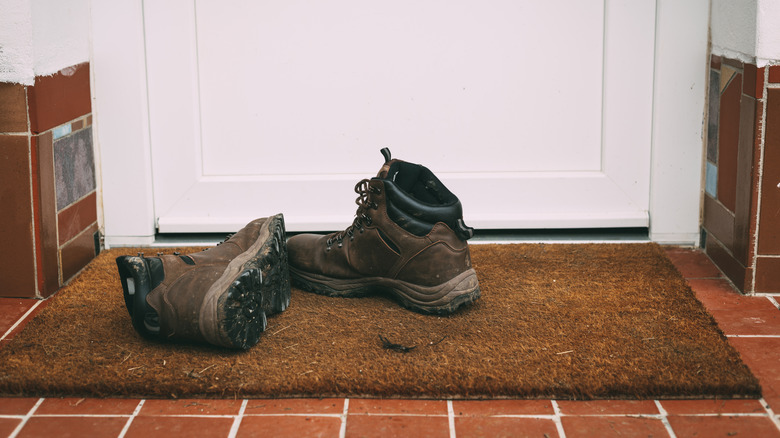Inexpensive Tips That Can Help Protect Your Home From Intruders
At the end of the day, thieves don't care if you've spent months saving up for that new laptop or if that gemstone ring has been in your family for generations. Even with alarm systems and multiple locks installed, they may still find ways to break in and take your most meaningful belongings. Luckily, there are ingenious ways to fight back against these trespassers.
With millions of property crimes happening in the United States every year, it's important to take extra steps to protect yourself and your property. Even if you can't afford home monitoring or fancy safes for your valuables, you can still find other ways to turn away burglars. Thieves basically have a few guidelines when breaking in -– they want to take as much as possible in the shortest time possible, with no hiccups along the way.
As a homeowner or renter, you have ways to disrupt their plans. Make your home less appealing to a burglar by making it seem inconvenient, frustrating, and difficult to break in. The tips below are inexpensive and invaluable for deterring theft of your property.
Hide garbage that indicates expensive purchases
It's easy to get swept up in the excitement of unboxing a big purchase. Overtaken with enthusiasm, most people throw away the packaging without a second thought. Instead of mindlessly tossing these items to the curb, break down the boxes, bag them, and tuck them deep into your garbage bin. If you want to go the extra mile, cut them up with a box cutter or corrugated scissors to make it even less obvious you recently splurged on yourself.
It may seem like a lot of trouble to dispose of some old packaging material, but thieves look for these purchases when scouting communities. A giant box with a vibrant image of your latest big-screen TV beside your driveway alerts the whole neighborhood that you have something new and valuable inside your home. This may impress your neighbors but also entices burglars, potentially putting yourself and your property in danger.
Secure door hinges with tamperproof screws
Doors and windows are the main points of access to your home. Since they are the most accessible locations, you should do your best to make them more difficult to access for those without keys. Make them trickier to break open by installing tamper-proof security screws in traditional and screen-door hinges and window shutters. Before you order the screws, take a look at each door and window hinge you want to redo. Tamper-proof hardware typically comes in multiple-piece packs, such as this six-pack from Amazon (available for $8.99), so you'll want to buy the same amount of screws as there are on each hinge. Once you have the fixtures, all you do is remove the existing hardware and replace them with these secure deterrants.
Tamper-proof fittings are designed with pin inserts, which obstruct people from fiddling and unscrewing them without special tools. Some only rotate in one direction and are permanent, making them impossible for even you to remove. Manipulating security hinges is difficult and tedious, even for the most nimble thieves. Burglars need to clear out a home before the authorities or homeowners return, and being delayed increases their chances of getting caught or giving up. They'll be discouraged once they realize your home isn't an easy target.
Make them think you're at home
The next time you leave for work, school, or other daily errands, don't make it so obvious that you aren't home. Leave on a light or turn on the stereo to create the illusion that someone is inside. These low-energy options won't run up your electric bill but still make it appear that your home is occupied and protected for the time being. Ensure the lights and sound are faintly visible or audible outside for a more convincing setup.
According to ADT, most burglaries occur during daytime hours between 10 am and 3 pm. While we may imagine burglars creeping into homes at night, the truth is that many would rather break in during the day when household members are out. Thieves don't want to run into people, which would further complicate their nefarious plans and possibly increase the severity of their crimes. Therefore, sounds and lights in your home make it a far less desirable target. This advice also goes for people who leave their houses unattended at night. If anything, the lights and radio sounds will be more obvious during quiet hours. Considering these conditions, this trick is effective for those who work nightshifts or spend their nights elsewhere.
Set up timer lights throughout the night
Take the light trick to the next level by using technology to advance it. You don't have to be home to turn on your lights when you hook up timers inside, outside, or in multiple locations around your property. These basic plug-ins are able to power your lights based on exact times or intervals. Home Depot's myTouchSmart Simple Set Plug-In is only $25.98 and has three presets for evening, morning, or night, or it lets you set a custom countdown.
Other similar devices to these timers are motion-activated lights. These lights don't need an assigned schedule; they power on any time a person walks too close to your doors or windows. Use light-emitting diode (LED) bulbs to have more effective lighting and save on energy costs. According to the United States Department of Energy, LEDs use 75% less electricity and last 30 times longer than incandescent bulbs. These bulbs don't just output light; you can direct the brightness in certain directions, making them well-suited as security lighting. To deter criminals, you only need one of these configurable devices to turn on a light that's visible from the street. Thieves won't know the lights are based on a timer system and are likely to assume someone is inside. Since most burglars would rather avoid confrontation, this makes your home a less appealing target.
Display security signs -- even if your home isn't protected
There are few things that stop burglars in their tracks faster than a security sign out front. If you have a real alarm or surveillance system installed, the manufacturer will likely include such signs with the purchase. ADT, SimpliSafe, and other brands from Security.org's top list of security companies are recognizable names that warn the outside world your home is secure. Even those who can't afford a genuine protection system can use this trick by purchasing dupes on Amazon. There are imitation video cameras for only $14.99 and "Secured by ADT Signs" for $16.99.
Safe Home and Cove Smart have released studies claiming between 50% and 72% of households in the United States have some type of security device, whether that's a video doorbell, surveillance system, or something else. These numbers have risen over the years, but you should keep in mind that these systems only fight half the battle. Burglars are only deterred by hidden security systems after they trigger them. Putting out signs or obvious cameras warning that you have an alarm system lets burglars know your home is protected before they break any locks or smash any windows. In fact, 25% of incarcerated burglars revealed to the Department of Criminal Justice and Criminology that they would walk away from homes clearly displaying security systems. They wouldn't want to take the risk of investigating the sign's validity and whether a real security system is actually hooked up.
Have a dog, or pretend you do
Not everyone has the money or time to adopt a dog into their household. According to Rover, pet parents spend between $40 to $290 per month on pet care, not including initial adoption costs or surprise vet visits. With these costs in mind, dog ownership isn't for everybody, but that doesn't mean you can't fake having a loyal protector in your home. There are dog barking alarms that imitate the sounds of dogs, tricking trespassers into thinking one is inside your home. This motion-detector alarm is only $32.99 on Amazon. You can also hang up "Beware of Dog" warnings around your property, such as this $9.99 sign on Amazon. If you want to be even more obvious and don't mind having to explain your actions to your friends and family, you can leave an old leash and collar by your front door.
Dogs are known for being loyal companions, generally beloved by people from all walks of life. There's also no denying that these animals are a protective asset. Many species guard their owners with their lives, and both large and small breeds alike can prevent crime. Typically, large dogs frighten burglars because they are physically powerful, while small dogs deter them by being noisy and drawing attention to their unscrupulous activities.
Add a barrier to the bottom of your sliding doors
Burglars know all the ins and outs of tampering with standard locks, door hinges, and window frames. What they aren't always prepared for are improvised barriers blocking their stealthy entry. Take a long metal or wooden pole and lay it in the tracks of your closed sliding door. The bar prevents the door from sliding open, making it impossible to open naturally from the outside. Choose a bar that is only slightly shorter than the sliding track length. You want enough space to place it and remove it without difficulty, so the door should only be able to push back an inch or so when it's in the way. If you can't find a random spare object that does the job, buy a security bar for only $19.99 on Amazon.
Contrary to popular belief, many thieves don't want to smash your windows and ransack your home out of pure evil. They want to slip in and escape undetected with your valuables in their possession. If they can't get the door open quietly and quickly, they're more likely to give up and move on to the next most enticing home in your neighborhood.
Park your car in the driveway
Sometimes, having all of your assets locked up behind your garage doors and walls feels safer, but you could be hiding a powerful crime deterrent that you already have at home. Instead of parking your cars inside your garage, consider leaving one in the driveway when your house is unoccupied. Just remember to lock the car doors and don't leave valuables inside the vehicle. If you have two cars of significantly differing values, always leave the less expensive one outside.
The news site KTVB surveyed 86 inmates incarcerated for theft, and most admitted that a parked car makes them think twice before breaking into a home. One inmate stated, "Most of the time, that is a surefire sign of someone being home." Most thieves don't want to break in when people are home. A confrontation makes the situation more dangerous for all parties involved, and most thieves would rather avoid complications.
Don't reveal too much personal information in your home design
Thanks to the popularity of Instagram, TikTok, Etsy, and other online platforms, small businesses have found places to establish themselves and provide hundreds of customizable products to customers. Personalized products are all the rage, and home decorators are especially drawn to address plaques with their house numbers plastered in large, pretty fonts. This is a great idea to make your house numbers more visible from the street, making it easier for invited guests and delivery drivers to find your home.
However, you must be wary about putting any other details on these signs. Adding your house number and family name in a cursive oversized font may seem cute, but this homey interior design trend is more dangerous than you think. Advertising your name lets random pedestrians and passing cars know who lives in your house. They can use this information to look you up online, stalk your social media, and gauge what valuables you own and when you'll be out of the house. They can also convince neighbors they know you by pretending they are familiar with you on a first or last-name basis. If you receive one of these folksy signs as a gift or treat yourself with one, consider hanging it in a discreet location in your garage or on your porch, where it's less obvious to strangers on the street.
Don't overshare on social media
Protecting your privacy online is just as important as protecting it in real life. Ensure your social media is set to share photos, stories, and updates only with people approved to follow you. If you have a more public online presence, be smart about how much you're sharing. Your followers don't need to know the exact times and days you're traveling, at work, or attending events. If you take a long vacation, hold off on posting photos until you return. There's no reason to let the world know that your whole family is miles away and your home is currently uninhabited.
A 2010 report by the U.S. Department of Justice revealed that perpetrators and victims were familiar with each other in almost 2/3 of violent burglaries. With this in mind, you probably don't really know everyone you're friends with on social media. Unfortunately, all people aren't ruled by a moral compass, and there might be someone lurking on your page with bad intentions in mind. By openly posting every detail of your life, you make it easier for them to memorize your schedule and plans in an attempt to burglarize your home. Unfortunately, many burglars are smarter than we think. According to Legal Jobs, not all property crimes are reported, and only 19% of the reported cases are solved.
Keep your car keys by your bed
Before you lie down to sleep at night, don't forget to put your keys on the bedside table. This makes it easier to find your keyring in the morning and keeps it within arm's reach for any emergencies that arise. It costs nothing to put your electronic key fob by your bed, whether you lay it on the table or in a decorative tray.
When you hear strange noises at night or suspect someone is creeping around your property, you can easily reach out and hit the panic button. This sets off your car alarms, blaring obnoxious honks that quickly send potential burglars scampering away. The noise doesn't just spook them. It'll also draw neighbors' attention to your home, and the thief won't want to stick around for witnesses to see. Although most home invasions happen during the day, an FBI 2021 data report shared that over 150,000 break-ins also happen after sunset, making this nighttime tip worth mentioning.
Leave big boots by the door
Never underestimate a person's natural instinct to be wary of anything they perceive to be bigger than themselves. No matter your age, gender, height, or stature, put a pair of masculine boots by your front door. This public display creates the illusion (or shows the reality) that someone of considerable size dwells inside. You don't need to splurge on a great pair of boots, which might just entice thieves to steal the shoes themselves. Pick up a discounted pair at a thrift or secondhand shop. You can also browse Amazon for large work boots priced as low as $19.99. Of course, if you already present yourself as masculine and have a pair of boots, simply leaving those outside might do the trick. Just make sure they're dirtied up and not obviously brand new.
In short, this trick works because successful criminals often scout homes, looking for any signs it will be an easy mark. Leaving imposing boots outside could drive off trespassers who lack confidence in their physical abilities. They don't want to risk a confrontation with someone who could easily overpower them, compromising their own safety and well-being.
Put an object on your door handle at night
If you're looking for another nighttime protection tip, try hanging objects on your entry and back door handles. Unfortunately, this doesn't work on round doorknobs since their shapes don't work for this hack. However, "straight passage" door handles create a great hook to dangle coffee mugs from. It's simple to hang the mug handle on the door grip, pushing it up far enough so that it doesn't slowly slide off. The only real fact to remember is that you should avoid choosing one of your favorite mugs for this trick. Instead, choose one that you don't mind chipping or shattering if the handle is turned from the other side and the mug ends on the floor.
This trick works by creating a DIY alarm if anyone tries to wiggle your door open from the outside. When they push down on the handle to get into your home, the mug will slip off the handle and crash on the floor. This alerts you and everyone else in your home that someone is at your door and potentially spooks a trespasser by causing unwanted noise.
Jam the door lock with a broken fork
A malleable fork may not always create a high-quality experience at mealtime, but it can provide an extra layer of security in hotel rooms and homes alike. This fork lock hack turns an everyday staple into an affordable home security device that will keep thieves at bay, or at the very least warn you of their attempt to break in. You will want to use a fork that can be broken with a bit of effort, but not so flimsy that it completely gives out after a few pushes from a persistent robber. Also, it's worth reminding that this trick will only work with doors that open toward the inside of a house or room.
To turn a flexible fork into a lock, bend it repeatedly at the neck until you separate the handle from the head. Using the leverage of a flat surface, or pliers if you have them on hand, bend the top of the prongs to as close a 90° angle as possible. Then, insert the bent prongs toward the door jamb and close the door. With the bottom of the prongs sticking out of the door, feed the handle through one of the gaps so that either end catches below the jamb and the door handle. In just a few minutes, you will have an added element of protection to offer peace of mind when it comes to your safety.
Secure a zip tie to your garage door's emergency release
If you have a windowed garage attached to your apartment, house, or townhome, an emergency rope system should be hooked up to the ceiling mechanisms. This rope is often located near the garage entrance, making it easily accessible for intruders. They can break through your garage door windows or use a metal tool to bend the door itself so they can reach the emergency rope on the other side. All it takes is one tug, and your door rolls open for them to intrude.
Remove this possibility by using a single zip tie— you can get a whole pack for as little as $1.25 from Dollar Tree. Loop one side through the upper notch in the emergency mechanism and slip the other side through the notch supporting the rope. Secure them together so the rope can't be pulled and cannot open your garage door. If you ever need to release this mechanism, all you have to do is cut the zip tie, making it an inconsequential nuisance long-term.

